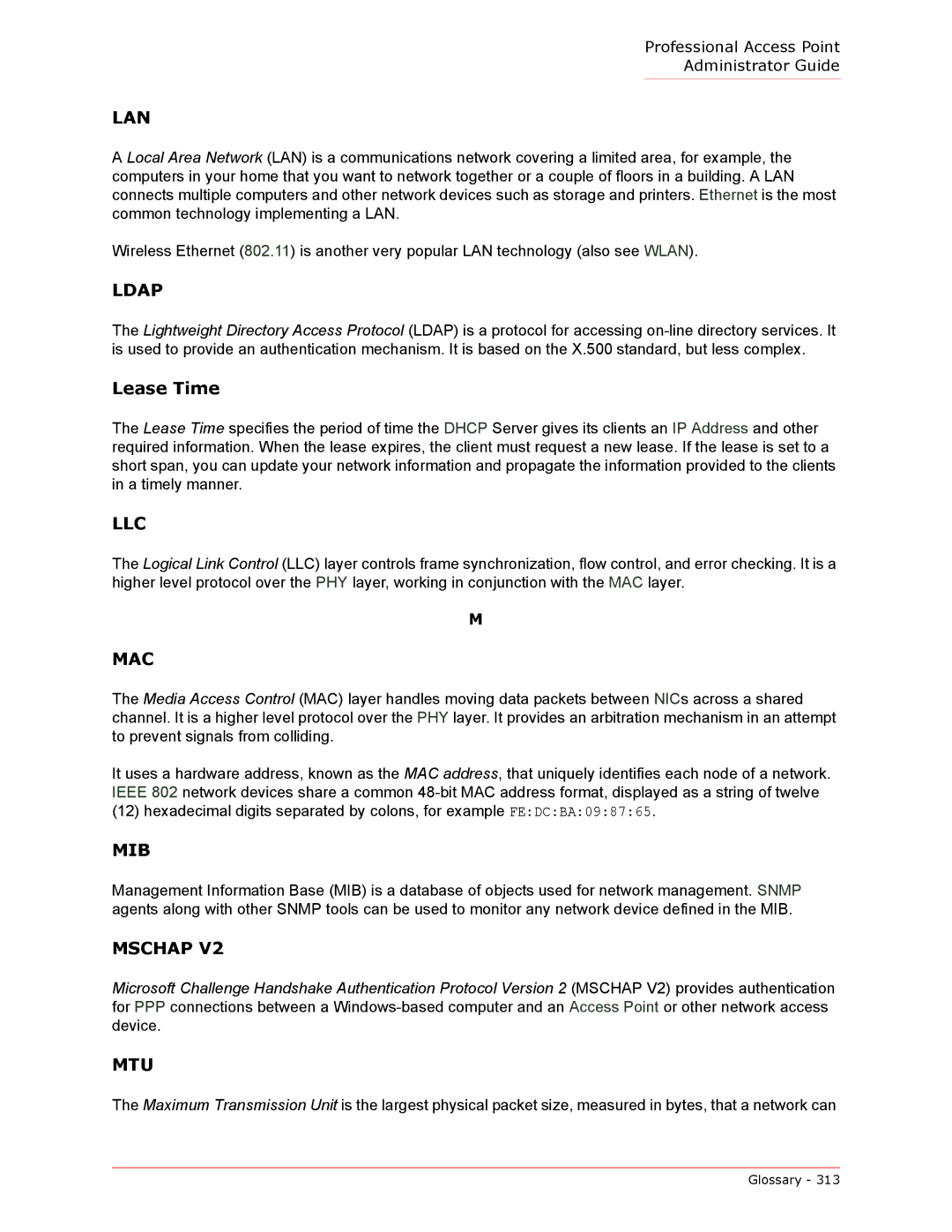
Professional Access Point
Administrator Guide
LAN
A Local Area Network (LAN) is a communications network covering a limited area, for example, the computers in your home that you want to network together or a couple of floors in a building. A LAN connects multiple computers and other network devices such as storage and printers. Ethernet is the most common technology implementing a LAN.
Wireless Ethernet (802.11) is another very popular LAN technology (also see WLAN).
LDAP
The Lightweight Directory Access Protocol (LDAP) is a protocol for accessing
Lease Time
The Lease Time specifies the period of time the DHCP Server gives its clients an IP Address and other required information. When the lease expires, the client must request a new lease. If the lease is set to a short span, you can update your network information and propagate the information provided to the clients in a timely manner.
LLC
The Logical Link Control (LLC) layer controls frame synchronization, flow control, and error checking. It is a higher level protocol over the PHY layer, working in conjunction with the MAC layer.
M
MAC
The Media Access Control (MAC) layer handles moving data packets between NICs across a shared channel. It is a higher level protocol over the PHY layer. It provides an arbitration mechanism in an attempt to prevent signals from colliding.
It uses a hardware address, known as the MAC address, that uniquely identifies each node of a network. IEEE 802 network devices share a common
MIB
Management Information Base (MIB) is a database of objects used for network management. SNMP agents along with other SNMP tools can be used to monitor any network device defined in the MIB.
MSCHAP V2
Microsoft Challenge Handshake Authentication Protocol Version 2 (MSCHAP V2) provides authentication for PPP connections between a
MTU
The Maximum Transmission Unit is the largest physical packet size, measured in bytes, that a network can
Glossary - 313
